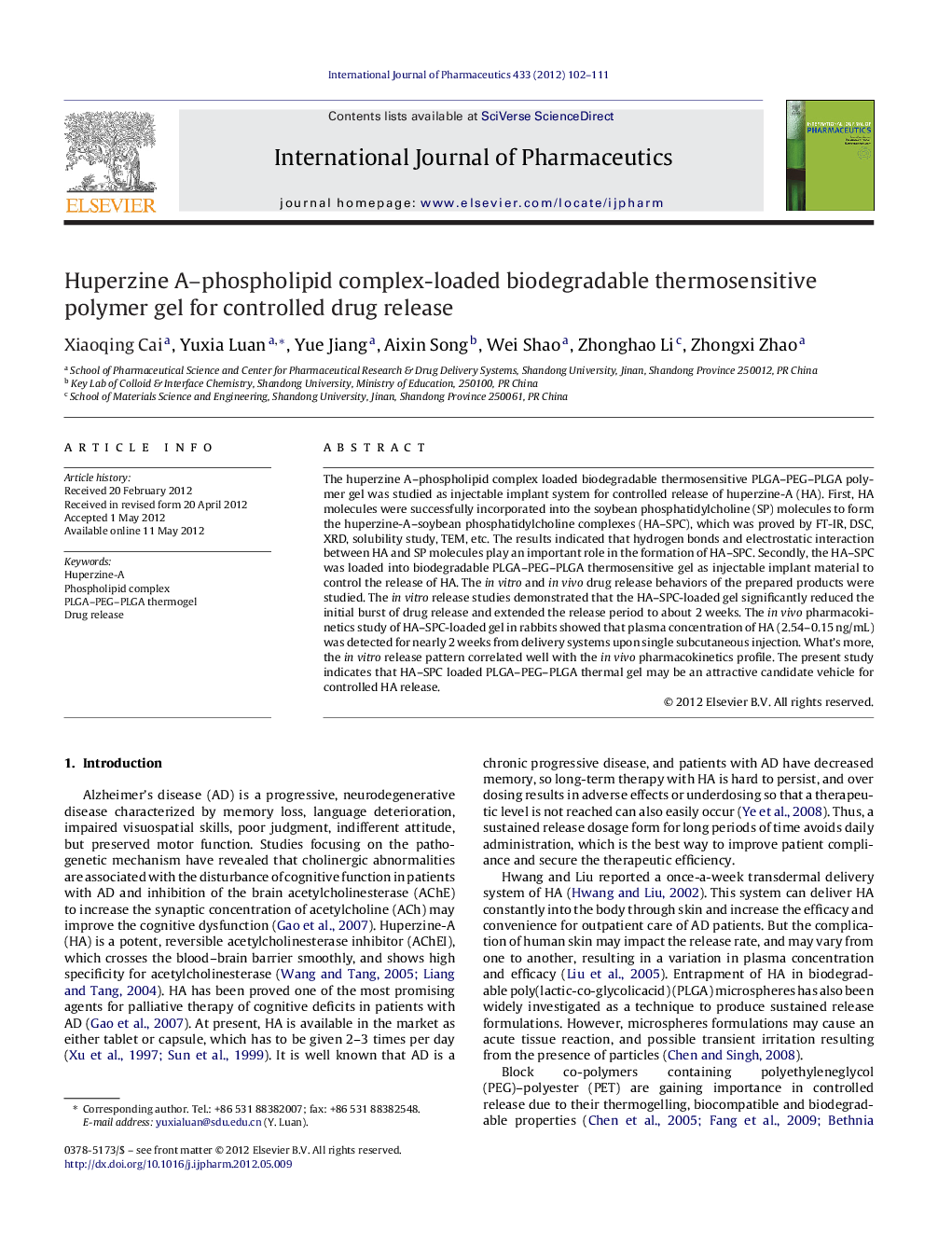| Article ID | Journal | Published Year | Pages | File Type |
|---|---|---|---|---|
| 2502909 | International Journal of Pharmaceutics | 2012 | 10 Pages |
The huperzine A–phospholipid complex loaded biodegradable thermosensitive PLGA–PEG–PLGA polymer gel was studied as injectable implant system for controlled release of huperzine-A (HA). First, HA molecules were successfully incorporated into the soybean phosphatidylcholine (SP) molecules to form the huperzine-A–soybean phosphatidylcholine complexes (HA–SPC), which was proved by FT-IR, DSC, XRD, solubility study, TEM, etc. The results indicated that hydrogen bonds and electrostatic interaction between HA and SP molecules play an important role in the formation of HA–SPC. Secondly, the HA–SPC was loaded into biodegradable PLGA–PEG–PLGA thermosensitive gel as injectable implant material to control the release of HA. The in vitro and in vivo drug release behaviors of the prepared products were studied. The in vitro release studies demonstrated that the HA–SPC-loaded gel significantly reduced the initial burst of drug release and extended the release period to about 2 weeks. The in vivo pharmacokinetics study of HA–SPC-loaded gel in rabbits showed that plasma concentration of HA (2.54–0.15 ng/mL) was detected for nearly 2 weeks from delivery systems upon single subcutaneous injection. What's more, the in vitro release pattern correlated well with the in vivo pharmacokinetics profile. The present study indicates that HA–SPC loaded PLGA–PEG–PLGA thermal gel may be an attractive candidate vehicle for controlled HA release.
Graphical abstractFigure optionsDownload full-size imageDownload high-quality image (181 K)Download as PowerPoint slide
